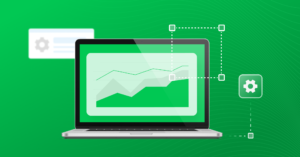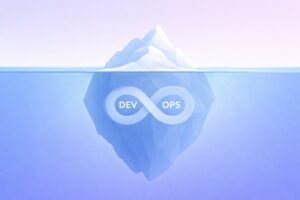Here’s how software developers and engineers can ensure optimal resource utilization
DevOps isn’t a sprint; it’s a marathon. That long, winding road is riddled with obstacles, from technical debt to problematic code deployment to suboptimal resource utilization. It’s critical that developers and engineers consistently monitor performance across systems and ensure that backend components are performing as intended. However, doing so manually is a tedious, time-consuming process that can make the path to market even longer.
Here’s the good news: As with many facets of DevOps, there are ways to streamline the infrastructure monitoring process. Here’s what you need to know about infrastructure monitoring, including how it differs from other types of monitoring and its benefits and drawbacks.
What is Infrastructure Monitoring?
Infrastructure monitoring refers to the process of collecting valuable data from the servers, containers, databases, and other backend components used to develop software. This allows developers and engineers to visualize critical metrics, analyze their findings, and quickly address any issues that might be impacting the user experience.
It’s important to note that while infrastructure monitoring is important, it’s only one piece of the IT monitoring puzzle. Others include:
- Network infrastructure monitoring: While infrastructure monitoring typically refers to a single workstation or hardware component, network infrastructure monitoring means applying that process to an entire network to identify which servers are falling behind and need attention.
- DevOps monitoring: Also called continuous monitoring, this process is defined by the automated processes of data collection, analysis, reporting, and response. DevOps monitoring covers networks and individual applications.
- Cloud monitoring: As the name suggests, cloud monitoring refers to the overseeing of cloud-native environments and services. This process tracks cloud-specific metrics like service usage, cloud costs, and API calls.
Performed individually, these forms of IT monitoring can drain resources and increase time to market. However, those using cloud environments can streamline and automate monitoring processes by partnering with a DevOps platform like DuploCloud. Read our whitepaper to learn how DevOps automation helps developers deploy cloud-native applications up to ten times faster.

How Infrastructure Monitoring Works
Imagine this: Your day is interrupted by an unexpected outage. Some component in the DevOps pipeline isn’t working as intended; perhaps you’re getting error messages when you attempt to ping a server or consult a database. Without an infrastructure monitoring process in place, you’ll have to perform numerous tests across systems to find the weak link, which may have caused cascading issues by that point.
On the other hand, infrastructure monitoring identifies smaller issues before they become outages, helping you avoid costly downtime. Even if an outage does occur, it’s far easier to find the source of the problem if you have monitoring data to consult.
The most efficient way to collect the data you need is by integrating an infrastructure monitoring tool that uses centralized observability applications. These tools monitor key performance indicators like uptime, accessibility, capacity, and performance and then make that data available in an easy-to-understand dashboard.
Infrastructure monitoring provides several other benefits, in addition to proactively addressing development issues. Even when everything is running smoothly, there’s usually room for improvement, and monitoring tools can help optimize performance even further. Over time, monitoring data can be analyzed to predict future resource needs and forecast growth, as well as ensure compliance with various guidelines and regulations.
Limitations of Infrastructure Monitoring
As is often the case in DevOps, what seems straightforward on paper can be complex in execution. Finding the right infrastructure tool for your specific setup can be a challenge due to the complexity of backend systems, and not every tool suits every project. For example, legacy infrastructure monitoring tools may not properly integrate with cloud-based services. In some cases, tools may still require a good deal of manual configuration and data analysis, which defeats the purpose of integrating automation.
On top of that, infrastructure monitoring doesn’t exist in a vacuum. As discussed above, it’s one of several types of IT monitoring needed in the modern DevOps environment. Using siloed solutions for every type of monitoring makes it hard to get a holistic view of the health of your project.
To avoid these issues, you need a robust, cloud-native, unified platform in which infrastructure monitoring is just one part of the whole. For example, DuploCloud partners with monitoring tools Prometheus, CloudWatch, Elasticsearch, Jaeger, and Grafana for continuous monitoring across the board. Grafana is the infrastructure monitoring piece of that puzzle, but the fact that all of those tools work under a single platform significantly simplifies the overall monitoring experience.
Get Proactive Infrastructure Monitoring With DuploCloud
If you’re ready to implement infrastructure monitoring but don’t know where to start, DuploCloud can help. Our comprehensive diagnostics and monitoring features allow Devs to continuously monitor performance, proactively address issues, detect threats, and safeguard data integrity — all while helping you remain compliant. Developers can even create custom alerts for project-specific resources to ensure they’re never caught unaware if issues arise.
To learn more about how DuploCloud streamlines DevOps processes and implements monitoring tools, get in touch and set up a demo.



